ZKTeco to Display the Latest in Cruise Ship Security
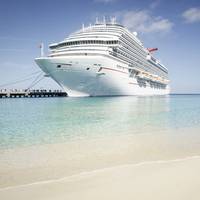
Biometric and RFID security solutions provider ZKTeco said it will showcase its latest developments in cruise ship security technology at Seatrade Cruise Global at the Broward County Convention Center in Ft. Lauderdale, Fla., from March 5-8, 2018. ZKTeco will have on display products designed to provide both passengers and crew in the cruise industry far greater safety and convenience. On display will be the ProBio-ID door access controller. ProBio-ID eliminates the worry of getting accidentally locked out of your room because you forgot your access card or PIN code.
Divers Find 2,000 Priceless Gold Coins
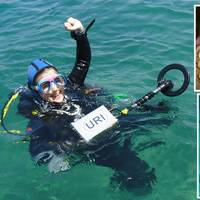
Scuba divers have found the largest cache of gold coins ever discovered in Israel working on wreck site in the ancient harbor of Caesarea on the country's Mediterranean coast, reports the Israeli Antiquities Authority (IAA). The treasure trove of 2,000 coins weighs more than 20 pounds and dates back more than 1,000 years to the era of Fatimid Caliphate, which ruled much of the Middle East and North Africa from 909 to 1171. “It is probably the shipwreck of an official treasury boat which was on its way to the central government in Egypt with collected taxes…
Jack W. Fisher Passes Away at 73

Jack W Fisher, president of JW Fishers Mfg. passed away at home after a brief illness on February 20, 2015. He was 73 years old. The JW Fishers business was started because Fisher, an avid diver, needed an underwater metal detector to use on a salvage project in the mid 1960s. He discovered there was no such device available. Over the next several years he designed and constructed his own underwater metal detector. JW Fishers Mfg. was formed and Jack began building and selling his detectors to other divers.
Historic Great Lakes Shipwreck Possibly Discovered
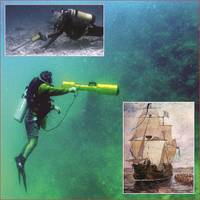
Steven Libert, president of the Great Lakes Exploration Group, announced he has located what is believed to be the remains of Le Griffon, the first European ship to have sailed the upper Great Lakes. The 45-ton barque carrying seven cannons was built by the legendary French explorer Rene-Robert Cavalier, Sieur de La Salle who was attempting to establish a Northwest Passage through Canada. La Salle wanted to provide a faster way to connect France with its trading partners in the Far East and Le Griffon was to be a vital link in the route between Niagra and Illinois.
Marine Industry Employs Boat Towed Detectors
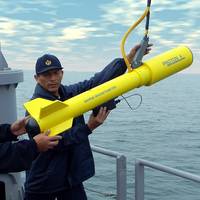
Many marine service companies are acquiring boat-towed metal detectors and magnetometers to assist in salvage operations and geophysical surveys. These devices can locate a variety of targets including sunken vessels, ship anchors and propellers, pipelines, cables and metal debris which must be removed from an area before dredging. The two primary pieces of equipment used in these operations are a magnetometer and the pulse induction (PI) metal detector. Magnetometers are super sensitive instruments that can detect iron and steel objects at hundreds of feet away.
JW Fishers Win More UMD Contracts
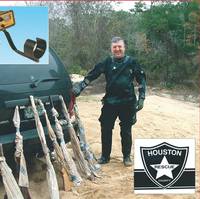
Police departments & sheriffs offices around the country are adding underwater metal detectors (UMD) to their crime-fighting armory. An essential tool for locating evidence disposed of in a waterway, metal detectors routinely assist police divers in finding weapons, shell casings, stolen objects, and explosive devices, inform JW Fishers. One group having great success with the underwater metal detector is Houston County Rescue in Webb, Alabama. Team members are highly trained public safety divers that provide assistance to law enforcement…
Boat-towed Detectors Assist Researchers and Salvors

A number of archaeological groups and marine service companies are acquiring boat-towed metal detectors to assist in locating shipwrecks and to perform geophysical surveys. These devices can locate a variety of targets including the piles of magnetic ballast stones found on many old wrecks, gold and silver bars, cannons, anchors, pipelines, cables, and various metal debris which must be removed from an area before dredging. The two primary pieces of equipment used in these operations are a magnetometer and pulse induction (PI) metal detectors.
Underwater Metal Detectors Assist in Artifact Recovery
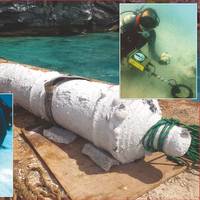
Underwater metal detector is successfully used for the African Slave Wrecks Project. In October 1619 the naval warship Warwick sailed into the King’s Castle Harbour in Bermuda with an important cargo from England; the colony’s new governor, Captain Nathaniel Butler. After taking on provisions the Warwick was to travel onto the struggling colony at Jamestown, Virginia, but it never made the voyage. Before the ship could sail, Bermuda was hit by a fierce hurricane. Battered by strong winds the Warwick broke free from her anchors…
More Public Safety Dive Teams Employ Side Scan Sonar
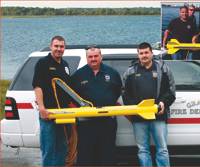
More public safety dive teams are adding sonar to assist in their underwater search and recovery operations. Side scan is the ideal tool for these operations because it produces detailed images of the underwater environment regardless of water clarity. In addition, the sonar is able to search large areas quickly, scanning several hundred feet of ocean, lake, or river bottom with each pass of the boat. The sonar does this by transmitting an acoustic beam from a towfish which sweeps the bottom and reflects off any objects lying there.
Diving Companies Track Pipes and Cables
WJ Castle PE & Associates Castle was recently subcontracted by Brayman Construction to perform an inspection and document the underwater conditions at a utility’s proposed site for a diffuser pipe extension. Using JW Fishers CT-1 cable tracker and PT-1 pipe tracker, Castle’s team of divers searched for a high voltage power cable and pipeline running through the area. Complicating the job was the excessive amount of debris littering the site, including steel plates, beams, and wire rope. Also close by were a seawall, constructed of steel-reinforced concrete and steel plates. Very high concentrations of ferrous metal in the area prevented the use a standard magnetometer, as it would be impossible to locate individual pieces.
Archaeologists Go Deep to Uncover History
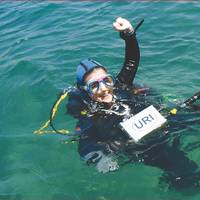
Many universities are adding or expanding their underwater archaeology programs in an effort to give students a broader educational experience and a better understanding of our maritime history. The field of underwater archaeology is expanding rapidly as the equipment required for marine exploration becomes more affordable, and more scientists and researchers learn to scuba dive. Indiana University (IU) Bloomington has one of the oldest academic diving programs in the country.
US ROV's Invade South America
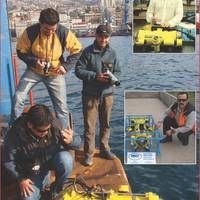
Subsea Engineering in Santiago, Chile is one of many South American enterprises and military establishments adding ROVs in an effort to expand their operational capabilities. The company offers a complete package of design and construction services including the building of pipelines and installation of submarine power and communications cables. Owner Pedro Campos is a certified Naval and Marine Engineer, and a member of the International Association of Diving Contractors. Campos says “performing underwater operations in my country is complex and challenging.
Law Enforcement Captures Underwater Search Equipment

The tools law enforcement agencies use to investigate crimes and ensure public safety are critical to their success. Police departments and sheriffs offices around the country are adding underwater search equipment to ensure their dive teams have the proper equipment to safely and effectively do their jobs. The two high tech tools in greatest demand are the side scan sonar and ROV. Sonar is one of most effective tools for underwater search and recovery (S&R) because it can scan large areas quickly and “see” what’s on the bottom regardless of water clarity.
Commercial Divers and Police Assisted by Metal Detectors

Randive, a commercial diving company based in New Jersey, is employing underwater metal detectors in their search and salvage operations. The company was founded in 1959 by Randor Erlandson, and in the early days focused primarily on the needs of the maritime industry around the ports of New York and New Jersey. In the decades since, the company has greatly expanded its operations increasing its staff to 16, and adding as its clients some of the largest shipping companies in the world.
Search and Salvage Down Under
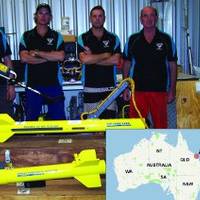
The Central Queensland Port Authority is undertaking one of the largest capital improvement projects in Australia. The RG Tanna Wharf Expansion Project involves extending the pier by 350 meters, widening existing berths, building a 1.3 kilometer onshore conveyor, and creating a new jetty approach. The cost of the construction portion alone is $128m. Marine contractor Realf’s Diving and Salvage was hired to survey the area before the dredging operation could begin. The company is based in Gladstone…
Law Enforcement Agencies Perform Underwater Searches
The security of many countries is being threatened from sources within and outside of their borders. For the lawman, having the right tools in his crime fighting arsenal is often critical to an operation's success. Today, a new set of high tech tools help law enforcement agents perform underwater searches safer, and more effectively, than ever before. In their investigative operations police routinely search for weapons used in the commission of crimes, hunt for drowning victims, and survey underwater structures looking for smuggled goods or explosives. For the police diver, one of his most effective weapons is the underwater metal detector. Used in evidence recovery operations, these detectors have been directly responsible for putting many criminals behind bars.
New Software to Aid Ship Recovery
Ocean Technology Foundation historian Peter Reaveley spent more than 30 years researching the battle between Bonhomme Richard and Serapis, using everything from eyewitness and literary accounts of both the battle and damage to the ship found in archives and libraries all over the world. Using these accounts, as well as wind, weather and tidal data from the time, OTF created a computer simulation to hopefully pinpoint the location where Bonhomme Richard is located. Still, explained project manager Melissa Ryan, the data they’re using is almost as old as the United States itself. They’re hoping that merging history, science and technology will give them an edge. The software they used to select their search area, Ryan said, is the same software that the U.S.
The Search Is On For WWII Sub Detection Networks
Prior to the outbreak of WWII the Japanese began construction of several different types of midget submarines. Recognizing the strategic importance of such a weapon for combat use, Japan built hundreds of these "mini subs" ranging in size from just under 80 ft. to over 100 ft. Designed to carry a crew of 2 to 3 sailors and armed with two torpedoes, these small subs were originally intended to be transported on ships and deployed in the path of an enemy fleet. However, very quickly the Japanese saw the advantages of using the mini subs for special operations inside enemy harbors where conventional submarines could not go. To enhance their stealth capability, the midget subs were modified to ride atop full size subs and be deployed at sea near the target location.





